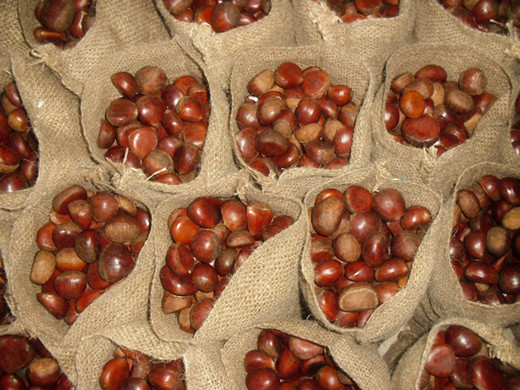Since ancient times, peasant households have been cultivating their donkeys for purposes such as transporting and grinding. However, with the development of agricultural modernization, the value of using donkeys has been significantly reduced. To this end, the future of donkeys is mainly to develop in the direction of meat. In fact, the donkey meat is delicious, and it has been said since ancient times, "the dragon in the sky, the donkey on the ground." According to the analysis, every 100 grams of donkey meat contains 18.6 grams of protein, 0.7 grams of fat, 10 milligrams of calcium, 144 milligrams of phosphorus, and 13.6 milligrams of iron. The effective nutrients are as good as those of cattle, rabbits, and dogs, and are typical of high-protein, Low-fat meat foods. Donkey meat also has health functions such as blood supplement and qi supplement. The wind of donkey meat is also emerging in places like Guangdong, Guangxi, Xinjiang, Shaanxi, Beijing, Tianjin, and Hebei, which shows that there is great potential for the development and breeding of meat donkeys. In addition, the endurance of donkeys that are inherently endemic to the harsh environmental conditions is the most prominent among all livestock. Once the living conditions of the donkey are changed and suitable fattening methods are applied, the feed rewards and raising benefits will have A significant increase is a new type of breeding industry that deserves attention and development. For the proper fattening of domestic donkeys, the following four measures shall be implemented: 1. Select donkeys. There are two varieties of meat donkeys to choose from: one is the rapid growth and development, which can speed up the fattening process and improve the feeding efficiency; secondly, it can make the body bigger, can grow more meat, and increase the slaughter rate. China's thoroughbred donkeys mainly come from the north, among which the most famous is the Guanzhong donkey and one of the world's thoroughbred donkeys. This kind of donkey is produced in Guanzhong Plain, Shaanxi Province, and its body shape is more than 30% larger than that of the southern land donkey. Its body height is more than 130 cm and its weight is 250-290 kg. The hair is black, and the eye ring, mouth, nose, and lower abdomen are gray and white. Pink nose, bright eyes, white belly," said. The other is the donkey from Texas. It is produced in Dezhou, Shandong Province, and along the coast of the Bohai Sea. It has a body height of 130 cm or more and a weight of about 260 kg. The coat is mainly black and pink, and is tall and compact. Improving the local donkey with a thoroughbred donkey and using its hybrid offspring for meat donkey breeding is the best choice. The selection requirements for meat donkeys are: strong physique, small and solid hooves, strong disease resistance, good heredity, and strong persistence. Second, fattening. Donkey should choose lee. Xiangyang, dry, warm and cool housing, according to age, body condition, male and female, strength and weakness of the slotted feeding, do not grazing, in order to reduce feed consumption, conducive to rapid fattening. The fattening process can be divided into three stages: 1. Adaptation period. It's about 1 month. In addition to nursing and other normal feeding and management, the newborn donkey can begin training and concentrate on eating about 10 days after birth. It can be fed with dilute food first, and the raw materials can be corn, barley, millet, oats, etc. Add a little sugar to the porridge. Love of sugar is a feature of the breeding of equine animals, but can not feed too much, generally used as a lure. Concentrate feeding starts at 10 grams per day and gradually increases until it reaches 100 grams per day at full moon. For newly purchased adult donkeys or donkeys that need to be eliminated, they can start with easily digestible dry grass, bran, etc. After a few days of normal observation, they enter the feeding period and feed the mixed feed. Use cotton seed husk, corn stalk powder, corn grass, soybean meal or other green and hay, concentrate 50% of cottonseed cake (bean cake, peanut cake), 30% cornmeal (barley, millet), bran (bean residue) 20% fit into. 2, increase meat period. The adult donkey can be compressed as appropriate according to the progress of its feeding health. The short-term can be transitioned in three months. The feed is the same as above, and the young donkey starts from 100-200 grams, and after two months from 500-1000. Ke begins. Afterwards, it will be increased month by month, and the feed concentrate can reach 3.0-3.5 kg by 9 months. 3, fattening period. It is 2-3 months. This period mainly promotes the full body fat of the donkey and deposits fat. In addition to the above-mentioned daily materials, the following methods of fattening can also be used: (1) Add 500 g each of soybeans and rice (millet) to ground, add 250 g of rice bran, mix in appropriate amount of salt, and feed on the donkey. 7-10 days. (2) Each donkey uses 100 grams of white sugar or 150 grams of brown sugar per day in warm water to allow the donkey to drink and even drink for 10-20 days. (3) 250 grams of lard, 1 kilogram of fresh leek, 10 grams of salt, fried and fed, once a day, even fed 7 days. (4) The yellow-fried cottonseed is cooked until it expands and splits, and 90% of the gossypol can be removed, and the smell is tangy. Each donkey feeds 1 kilogram per day and is fed for 15 days. (5) Orally taking 10 milligrams of ethylene-estradiol per day to the donkey, and even serving it for 7-10 days, implanting ethylene-estradiol 24 mg under the ear 100 days before slaughter, without increasing the daily gain. In addition, adding trace elements such as cobalt, iodine, copper, selenium, etc., can increase weight and improve feed utilization. Adding proper amount of zinc during the fattening process can prevent hair loss and skin diseases. Sheltered meat donkeys must be regularly fed, and fed four times a day early, middle, late, and late. During the spring and summer seasons, they can be fed one more time. In autumn and winter, they can be fed one time during the daytime. However, one meal at night (midnight) must be fed. As the saying goes, "No horses have no night grass." This is another feature of keeping horses. As the donkey is a monogastric animal, the size of the stomach is small and should be fed less. Crude material, fine grass and crop straw should be cut short, fine material should be flattened or ground or soaked, fermented, fried, baked, salted, etc., also need to provide adequate clean drinking water and the right amount of salt. Third, strengthen management. The meat donkey's fattening should pay attention to room temperature, heat insulation when the weather is cold, and try to let the donkey more sun, avoid excessive consumption of physical fitness due to cold; timely cooling when the heat, strengthen ventilation, to prevent heat stroke or loss of appetite. There should be about 1 hour of exercise each day. In the event of rain or snow, slight movements can be done in the shaded fence. Each day, the meat donkey is brushed several times with an external body, gently brushing the donkey body from the beginning to the end of the comb to stimulate the skin to promote blood circulation and enhance the body surface movement; Insects promote physical health. Donkey houses, feeding troughs and sinks are cleaned daily, cleaned and kept clean. Every 10 to 15 days, 3% of Lycopene is used to disinfect the donkey shelter to prevent disease. In addition, the health status of the donkey group is often observed. If abnormalities are found, timely diagnosis and treatment are required. Fourth, timely slaughter. After being fattened, it is suitable for the slaughter period, and then the growth of meat donkeys is slow, and feed rewards will gradually decline. The proper slaughtered slaughtered slaughter had the highest slaughter rate. One day prior to slaughter, the water was not fed, leaving the donkey in a hunger strike. Therefore, when feeding, no bleeding can be done during slaughter and the meat quality will be affected.
It`s a popular products with best taste. Fresh Chestnut is high carbohydrate content of dried fruit varieties,and can supply the body more heat energy and can help fat metabolism,beneficial gas spleen,thick filling gastrointestinal function.You can put fresh chestnut into water to boiling it or fry, it`s named `Chestnut Roasted With Sugar` in China,it`s very popular from Autum to Spring.Especially popular with girls.In foreign country,they are roasted alway,different country different way to eat it.No matter what,it`s a green and health food.We also supplied Fresh Ginger ,Air Dried Ginger , Fresh Garlic , White Garlic ,red garlic. Sweet Corn , Fresh Taro , Fresh Potato , Holland Potato . Fresh Baby Mandarin, Fresh Red Grape, Fresh Pomelo , Fresh Ya Pear Chaotian Chili , Paprika Powder , Fresh Apple and so on.


Fresh Chestnut 40-50pcs
Fresh Chestnut 40-50Pcs,Delicious Chestnut,Raw Sweet Chestnuts,Natural Fresh Chestnut
Jining Fuyuan Fruits And Vegetables Co., Ltd. , http://www.fuyuanfv.com

